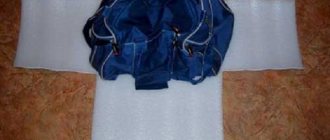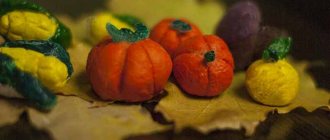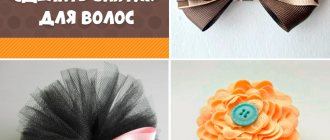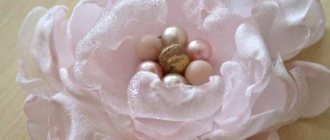A non-Newtonian fluid is a substance whose density directly depends on the velocity gradient. This phenomenon is due to the fact that the liquid consists of large molecules, which, in the absence of external influence, float freely in water (the mixture remains liquid). When a mechanical stimulus appears, the distance between them decreases, and the substance acquires the properties of solids. This behavior of some substances is also closely related to the complex spatial structure of molecules.
You can make a non-Newtonian fluid at home without much effort. It is perfect for playing with children or even performing magic tricks.
Newtonian and non-Newtonian fluids
Before starting the experiment, it is necessary to explain to the child the differences between a Newtonian fluid and a non-Newtonian fluid:
- In Newtonian solutions, molecules move according to Newton's physical laws. When exposed to external influences, water, alcohol, and gasoline flow and change shape. Their structure is preserved.
- A non-Newtonian substance can be viscous, fluid or solid, depending on the nature of the external force. Newton's laws don't apply here.
A non-Newtonian fluid, in simple words, is an intermediate substance between a fluid substance and a solid.
Can it be used somewhere?
Despite such interesting properties, non-Newtonian liquid has not found its practical application. Its characteristics are so unstable and difficult to predict that even in the age of technological development it is only suitable for playing with children.
The huge advantage of the liquid is its complete safety, so parents can play even with infants. If it occurs to the baby to try an unusual substance, then there will be no harm from it. The exception is colored liquids, but if you use food coloring, you can safely leave the child alone with such an interesting game. The only thing: don’t be surprised if, upon your return, you find your child, kitchen, and even a cat passing by dirty.
Classification
There are 3 main groups of anomalous substances.
Viscous
Does not depend on time. Among them there are viscoplastic ones - oil paints, types of paste. Pseudoplastic substances include suspensions of polymers and cellulose. With a little voltage they flow. Dilatant (starch solution, various types of glue) thicken with intense exposure.
A nonlinear non-Newtonian substance is blood, here the viscosity is determined by the speed factor.
Non-rheostable
Subject to the temporary factor. Yogurt, kefir, mayonnaise, and ketchup lose their viscosity when shaken. They are called thixotropic. Rheopectic substances thicken over time. These are colloidal solutions, bentonite clays.
Viscoelastic
Under the influence of force they flow, then restore their previous structure. These include some types of resins and dough-like pastes.
Examples of natural non-Newtonian fluids are quicksand, bogs in a swamp, and ground quicksand.
Recipe
Place about a quarter packet of cornstarch in a clean bowl and slowly pour in about a half cup of water. Stir. Sometimes it is more convenient to prepare colloidal starch solution directly with your hands. Continue adding starch and water in small portions until you have a consistency similar to honey. This is a future non-Newtonian fluid. How to make it homogeneous if all attempts to mix it evenly end in failure? Do not worry; just spend more time on the process. As a result, you will most likely need one to two cups of water per package of cornstarch.
Note that the substance becomes more dense as you add more powder to it. Pour the resulting substance into a frying pan or baking dish. Take a closer look at its unusual consistency as the “solid” liquid pours down
Stir the substance in a circle with your index finger - slowly at first, then faster and faster until you have an amazing non-Newtonian liquid.
Properties
A feature of anomalous substances is the ability to change density. Under mechanical action, the bond between molecules is strengthened, and the liquid acquires the characteristics of a solid. The molecular formula changes under the influence of a sound wave and an electromagnetic field.
For example, it is difficult to intensively stir a thick starch solution. Reduce speed, reduce effort - the spoon will move easily. If you fill a swimming pool with starch jelly, you can run across it as if you were running on the ground. Stop and you will fail.
The speed of the current does not affect the density of water. The faster honey and condensed milk flow, the lower their viscosity.
To visually study the properties, make a non-Newtonian liquid from starch.
Experiments
Both for the purpose of scientific knowledge and just for fun, you can try the following experiments:
- Run your finger over the surface of the resulting clot. Did you notice anything?
- Dip your entire hand into the mysterious substance and try to squeeze it with your fingers and pull it out of the container.
- Try rolling the substance in your palms to form a ball.
- You can even slap the clot with your palm as hard as you can. The spectators present will probably run away, expecting that they will now be sprayed with a starch solution, but the unusual substance will remain in the container. (Unless, of course, you spared starch.)
- Video bloggers offer a spectacular experiment. For it you will need a music speaker, which should be carefully covered with thick cling film in several layers. Pour the solution onto the film and play music at high volume. You will be able to observe stunning visual effects that are only possible with this unique composition.
If you are performing an experiment in the laboratory in front of schoolchildren or students, ask them why a non-Newtonian fluid behaves the way it does.
Why does it feel like a solid when you squeeze it in your hand, but flow like syrup when you open your fingers? Once the discussion is over, you can place the clot in a large plastic zip-lock bag to store it for next time. It will be useful to you to demonstrate the properties of the suspension.
Curious experiments
- You can roll the ball, and then relax your fingers and watch the ball begin to flow through them.
- Place any object in the liquid, maybe your hands, or for example a cup, and then sharply pull it out and the object will lift the container into the air along with the contents. Your hands will simply be cemented there.
- It is very interesting to watch how liquid flows from one saucer to another and hardens.
- You can tap the liquid and observe that the liquid behaves like a solid object.
Newtonian liquid as a toy is also notable for the fact that it is completely safe (unlike Chinese slimes). If a child even tries it (although I don’t think he’ll like it), it definitely won’t do him any harm. But after the game, the room, table, chair and bathtub are literally smeared with white spots which, by the way, are very easily washed off, just like a child’s hands!
Common flubber
Pour 3/4 cup of water and one cup of PVA glue into a separate bowl, mix these ingredients thoroughly and proceed to the next step.
In another bowl, you need to mix half a glass of water and 2 tablespoons of borax. Stir until the borax dissolves. Then combine the two resulting solutions and mix.
You can add coloring. After this, you need to place the resulting Newtonian fluid in a bag, close it and knead it. The resulting substance can be stored in this form.
Smart plasticine
For this method you will need the following components: PVA glue, sodium tetrabarate, food coloring.
Take a bowl, pour glue (about 100 grams), add dye and mix. Next, you need to add sodium tetrabarate and mix until a dense mass is formed.
Edible Newtonian fluid
Take a saucepan, pour in the condensed milk, put it on low heat, add a spoonful of starch, continuing to stir slowly. Once the liquid has thickened, you can add food coloring and stir everything again. Leave the resulting liquid on the window to cool. Be careful as Newtonian fluid can stain clothing and other items.
Well, today I want to tell you about a non-Newtonian fluid, which we finally made with our son, when once again we had to sit at home, recover and look for something to do with this restless creature. I heard and read a lot about this interesting substance, but for some reason I was afraid to do it, it seemed to me that it was very difficult.
It turns out that making a non-Newtonian liquid with your own hands is very simple, and preparing it will not be difficult at home.
Why is it called that? I think it’s better to ask physicists, since this is still more of a physical experiment than a chemical one, but I would venture to suggest that it’s all about the properties. An ordinary liquid, subject to the classical laws of physics formulated by Newton, behaves as we are accustomed to.
Imagine water. It flows, you can pour it from vessel to vessel, you can stamp your foot on it, raising clouds of splashes, you can splash it, splash it in all directions - and it will remain unchanged in its physical properties, it will always be liquid, flowing. There are many such examples - milk, gasoline, acetone, etc.
What is a non-Newtonian fluid? This is a substance that behaves completely unexpectedly when a force is applied to it. For example, in a calm state it is a pliable, flowing substance that can be spilled on the table, forming an ordinary unremarkable puddle.
But if you want to hit this puddle with your fist or, better yet, with a hammer, you will encounter unexpected resistance - the soft puddle will suddenly become hard and may even shatter into fragments. That is, it turns into a solid body.
The properties of such a solution are related to viscosity, or more precisely, to its change under external influence. As long as you do not apply any force to this solution or try to subject it to any deformation, you will have an obedient liquid in your hands.
As soon as you applied force, that is, changed the external influence, the viscosity instantly changed. Moreover, the higher the speed, that is, the faster you apply the external force, the more the viscosity will change.
The most common example of such a substance is starch mixed with water. How to make this interesting liquid from it yourself? To be honest, I didn’t follow the recipes and proportions that I came across. Everything was done “by eye,” but it turned out so interesting that my son and I spent almost the entire evening in the kitchen, playing with the resulting substance, making up the table, walls, floor, and even a little of the ceiling. But it was worth it. Both had more than enough joy!
I bought corn starch by weight at the market. I can’t even say who made it, since it was an ordinary plastic bag without any identification marks. 1 kg costs 380 tenge, which is approximately 70 Russian rubles.
I poured it into a bowl and began to gradually add water, stirring immediately. At some stage I felt that the spoon was beginning to turn with difficulty in this kind of “dough”, as if in hardening cement.
I put the spoon aside and started trying it with my hands - if you slowly immerse your hand in the solution, it calmly sinks to the bottom of the plate. If you sharply hit the surface of the solution with your palm, it seems as if you are knocking on something hard, but your hand remains dry and clean.
They say that instead of corn starch, you can use potato starch. I fully admit it, but I can’t say anything from my experience, since I only tried it on corn. I think that this does not matter, since, in essence, the composition is the same; in any case, the result is a solution of a polymer (starch is a natural polymer), that is, large molecules that are connected to each other in a variety of positions, which determines such interesting properties of the resulting solution.
So we spent the whole evening doing a variety of experiments with our son. Very interesting tactile sensations, no less funny than with the same hydrogel.
They dipped their hands, spoons, and forks into the solution. They hit the solution sharply and poured it slowly and quickly. If you put your hand under the stream while pouring, the flowing stream instantly hardens, hitting your fingers.
Then I remembered that I once saved an article about how to make homemade kinetic sand, it also needed cornstarch. Why not give it a try, since you've already started pigging out in the kitchen? I just had clean, sifted sand, which I once prepared for experiments with “chemical snakes.”
All you need to do is mix sand, starch and water. They mixed it - it turned out to be garbage. Not kinetic sand at all, but an amazingly convenient version of a non-Newtonian liquid that does not dirty your hands and, nevertheless, does not lose its unusual properties.
You can mix it, pour it, roll it into balls, throw it forcefully on the table, hit it with your hands. For example, you can roll it into a sausage - while you roll it in your hands, it is hard, but as soon as you stop rolling it, it immediately turns into a puddle right in the palm of your hand.
Where are non-Newtonian fluids used?
Anomalous substances are used in the following industries:
- In military affairs, the production of body armor with “liquid armor” technology. At the point of impact, the filler instantly hardens. In its normal state, the vest is soft and elastic.
- In automobile production. Special suspensions are added to oils to reduce friction at high engine speeds.
- In the oil industry. Polymer additives are used to reduce the resistance coefficient in pipelines.
- In putting out fires. To increase the length of the jet from the fire nozzle, polymers are mixed into the fire extinguishing solution.
- In the cosmetics industry. Synthetic ingredients, oils, and waxes are added to cosmetics to add viscosity.
The non-Newtonian fluid recipe is used in home cooking. For example, when preparing sauces based on flour, caramel, marmalade.
Cooking features
To create a non-Newtonian liquid at home, you should take cold water, starch (corn or potato - it doesn’t matter), and a deep bowl. Cooking algorithm:
- Pour the starch into a bowl (don't be afraid to add more to get enough of the substance);
- Add water there and slowly stir the mixture;
- Water is added until a mass similar to jelly is obtained;
- It is better to mix with your hands, and you can also add dye to obtain a colored substance;
- Stirring must be continued until a homogeneous mixture is formed.
To make sure you have properly mixed the water with the starch, stir the substance with your hand, gradually speeding up. The liquid will begin to solidify, and you will feel the resistance increase as the mixing force increases. As soon as the hand stops, the mixture will again become a regular liquid. After this, you can show the trick to the child and play with him.
A non-Newtonian liquid can be made with PVA glue and borax, but then you need to be careful so that children don’t put the interesting thing in their mouth.
To do this, you will need two glasses of water (one half filled, the other three-quarters full), a glass of glue and a tablespoon of borax.
Glue is added to a fuller glass, and borax to a half-filled glass. Both mixtures are thoroughly stirred and combined in one container. It is better to keep such a substance in the refrigerator, because it is not very convenient to prepare it again every time.
How to make a non-Newtonian fluid with your own hands
Entertaining research at home with children makes it easier to study physics and chemistry at school. DIY non-Newtonian fluid is an interesting and fun experiment.
Recipe with starch
Housewives know how to prepare jelly - a non-Newtonian liquid is made in approximately the same way:
- Take corn or potato starch and water in equal proportions.
- Add starch little by little into a large container with warm water, stirring the solution.
- Bring the solution to a consistency where mixing becomes difficult.
The object for study is ready.
Recipe with PVA glue
You can make a non-Newtonian liquid without starch from PVA glue and borax (sodium tetraborate), taken in a ratio of 1:1 to 1:4. Step-by-step instruction:
- Squeeze glue into the container.
- Add sodium tetraborate solution.
- Mix thoroughly.
For best results, let the mixture brew in a sealed container for 2 hours.
How to play?
Having figured out how to make a non-Newtonian fluid at home, the question arises of what to do with it. Children can see for themselves how its properties change as follows:
- Rolling out a ball in your hands, which will feel like a solid body, but will immediately spread out after the impact stops;
- Kneading the mixture in your hands or pouring it from one vessel to another (if you pour from a sufficient height, then in the other vessel it will look more like hard clay);
- Using powerful speakers on which film is placed and liquid is poured out (if you play a song with sufficient vibrations, you will get so-called “jumping worms”).
In the process of testing the liquid, take a deeper vessel and make a so-called pool for the toy. If a child tries to jump or run on the surface with it, it will remain hard. But as soon as you stop, the toy will drown, as if in ordinary water.
Games and experiments with non-Newtonian fluid for children
Do-it-yourself non-Newtonian liquid - chemical experiment at home. Now study with your child the physical properties of the starch substance:
- Slowly lower your hand into the composition - it will go in easily, like in water.
- Hit the surface with your palm backhand - the hand will bounce off and remain dry.
- Instruct your child to stir the substance quickly and slowly and compare the results.
- Try rolling the starch mixture into a ball. When moving, the ball will be solid, and when it stops it will spread across the palm.
3 tbsp. spoons of potato starch, 2 tbsp. spoons of water, mix food coloring to a thick consistency. You will get a children's toy “lizun”. The listed ingredients will not cause allergies. “Hand chewing gum” can be wrapped in plastic or placed in an inflatable balloon.
This recipe for a non-Newtonian liquid will allow you to make handgam without starch:
- Mix 50 ml of water and PVA glue thoroughly.
- Add dye to the mixture and mix again.
- Separately, dissolve 20 g of soda in water (50 ml).
- Gradually pour the soda solution into the mixture, stirring until smooth.
The disadvantage of home handgams is their fragility. The contaminated “lime” needs to be thrown away and a new toy made.
How did this concept appear?
Isaac Newton was the first to draw attention to the peculiarities of the viscosity of liquids. He noted that as the speed of fluid flow decreases, its resistance decreases. This data can be easily checked by trying to row the oars quickly and slowly - the latter is definitely easier. Newton's work marked the beginning of the study of the rheological properties of liquids, and at the same time specific mixtures of large molecules were discovered that did not entirely obey generally accepted laws. They were called non-Newtonian and began to be actively studied, but to no avail.
About viscosity
Sir Isaac Newton argued that viscosity, or a fluid's resistance to flow, depends on temperature. So, for example, water can turn into ice and back precisely under the influence of heating or cooling elements. However, some substances existing in the world change viscosity due to the application of force, and not due to changes in temperature. Interestingly, the ubiquitous tomato sauce, which becomes thinner with prolonged stirring, is considered a non-Newtonian liquid. Cream, on the other hand, thickens when whipped. These substances do not care about temperature - the viscosity of non-Newtonian liquids changes due to physical impact.
Rheological models of liquids
Classification is made according to the dependence of viscous stresses on shear rate (velocity gradient) γ˙=|∂v→∂z|{\displaystyle {\dot {\gamma }}=\left|{\frac {\partial {\vec {v} }}{\partial z}}\right|}, where v→{\displaystyle {\vec {v}}} is the flow velocity.
- Newtonian fluid - linear law: σ=αγ˙{\displaystyle \sigma =\alpha {\dot {\gamma }}}
- Power-law fluid is nonlinear, power law: σ=αγ˙n{\displaystyle \sigma =\alpha {\dot {\gamma }}^{n}} Pseudo-plastic — n<1{\displaystyle n<1}, with slow movements viscosity is high and then decreases.
- Dilatant liquid - n>1{\displaystyle n>1}, viscosity increases with increasing speed.
σ={σ+αγ˙,γ˙>−σ+αγ˙,γ˙<{\displaystyle \sigma ={\begin{cases}\sigma _{0}+\alpha {\dot {\gamma }}, {\dot {\gamma }}>0\\-\sigma _{0}+\alpha {\dot {\gamma }},{\dot {\gamma }}<0\end{cases}}}
A clear example of a Bingham fluid is paint - due to the action of binders, a threshold for shear stress arises, and it is capable of forming fixed layers on vertical surfaces. Any other liquids will flow down. For non-Newtonian liquids, it is possible to observe other effects associated with nonlinearity or the existence of a threshold. It is worth noting that the complication of the dependence of viscous stresses forces us to abandon the “traditional” Navier-Stokes equation for a Newtonian fluid by complicating the model of the viscous tensor.
A separate case of non-Newtonian fluids are thixotropic and rheopex fluids, the viscosity of which changes over time.
Another classification is based on the dependence of viscosity η{\displaystyle \eta } on the shear rate γ˙{\displaystyle {\dot {\gamma }}}:
- dηdγ˙>{\displaystyle {\frac {d\eta }{d{\dot {\gamma }}}}>0} corresponds to the case of a dilatant
liquid; - dηdγ˙<{\displaystyle {\frac {d\eta }{d{\dot {\gamma }}}}<0} corresponds to the case of a pseudoplastic
fluid.
Typical examples of dilatant liquids are concentrated suspensions of solid particles (eg quicksand); pseudoplastic - polymer melts and solutions.
Definition
A simple equation describing the viscous forces in a Newtonian fluid, which largely determine its behavior, is based on shear flow:
τ=μ∂u∂y{\displaystyle \tau =\mu {\frac {\partial u}{\partial y}}},
Where:
- τ{\displaystyle \tau }—tangential stress caused by the liquid, Pa;
- μ{\displaystyle \mu } - dynamic viscosity coefficient - proportionality coefficient, Pa s;
- ∂u∂y{\displaystyle {\frac {\partial u}{\partial y}}} is the derivative of the velocity in the direction perpendicular to the direction of shear, s−1.
This equation is usually used when a fluid flows in one direction, when the flow velocity vector can be considered codirectional (parallel) at all points of the fluid volume under consideration.
From the definition, in particular, it follows that the Newtonian fluid continues to flow even if the external forces are very small, as long as they are not strictly zero. For a Newtonian fluid, viscosity, by definition, depends only on temperature and pressure (as well as on the chemical composition, if the fluid is not pure), and does not depend on the forces acting on it. A typical Newtonian fluid is water.
If the fluid is incompressible and the viscosity is constant throughout the entire volume of the fluid, then the shear stress in a rectangular coordinate system is expressed by the equation:
τij=μ(∂ui∂xj+∂uj∂xi){\displaystyle \tau _{ij}=\mu \left({\frac {\partial u_{i}}{\partial x_{j}}}+{ \frac {\partial u_{j}}{\partial x_{i}}}\right)}
with the accompanying stress tensor P{\displaystyle \mathbb {P} } (also often denoted σ{\displaystyle \mathbf {\sigma } }):
Pij=−pδij+μ(∂ui∂xj+∂uj∂xi){\displaystyle \mathbb {P} _{ij}=-p\delta _{ij}+\mu \left({\frac {\partial u_ {i}}{\partial x_{j}}}+{\frac {\partial u_{j}}{\partial x_{i}}}\right)},
where, according to traditional tensor notation:
- τij{\displaystyle \tau _{ij}} is the shear stress on the i{\displaystyle i}th face of the fluid element in the j{\displaystyle j}th direction;
- ui{\displaystyle u_{i}} — speed in the i{\displaystyle i}th direction;
- xj{\displaystyle x_{j}} — j{\displaystyle j}th direction coordinate.
If a fluid does not obey these relationships (viscosity varies depending on the speed of the fluid flow), then it is in contrast called a non-Newtonian fluid: polymer solutions, a number of solid suspensions and most very viscous liquids.
Types of non-Newtonian behavior
Summary
Classification of fluids with shear stress as a function of shear rate.
Comparison of non-Newtonian, Newtonian and viscoelastic properties
| Viscoelastic | Kelvin material, Maxwell material | “Parallel” linear combination of elastic and viscous influences. | Some lube, whipped cream, Silly Putty |
| Time dependent viscosity | Reopections | Apparent viscosity increases with increasing load duration | Synovial fluid, printer ink, gypsum paste |
| Thixotropic | Apparent viscosity decreases with increasing loading duration. | Yogurt, peanut butter, xanthan gum solutions, aqueous iron oxide gels, gelatin gels, pectin gels, hydrogenated castor oil, some clays (including bentonite and montmorillonite), suspension of carbon black in molten tire rubber, some drilling fluids, many paints, many flake suspensions , many colloidal suspensions | |
| Non-Newtonian viscosity | Shear thickening (dilatant) | Apparent viscosity increases with increasing load | Suspensions of corn starch in water (oobleck) |
| Shear thinning (pseudoplastic) | Apparent viscosity decreases with increasing load | Nail polish, whipped cream, ketchup, molasses, syrups, paper pulp in water, latex paint, ice, blood, some silicone oils, some silicone coatings, sand in water | |
| Generalized Newtonian fluids | Viscosity is constant. The stress depends on the normal and shear strain rates and the pressure applied to it. | Blood plasma, custard, water |
Popular articles Pincushion “Mushroom”
Shear thickener
The viscosity of a shear thickening fluid or dilatant fluid appears to increase with increasing shear rate. Cornstarch suspended in water (“oobleck”, see) is a typical example: when stirred slowly it appears milky white, but when stirred vigorously it appears as a very viscous liquid.
Shear thinner
Paint is a non-Newtonian fluid. A flat surface covered with white paint is oriented vertically (before filming, the flat surface was horizontal and placed on a table). The fluid begins to flow over the surface, but due to its non-Newtonian nature, is subject to stress due to gravitational acceleration. So instead of sliding across the surface, it forms a very large and very dense droplet with limited flow.
A familiar example of the opposite - shear thinner or pseudoplastic fluid - is wall paint: the paint should flow easily from the brush when applied to the surface, but not drip excessively
Note that all thixotropic fluids are highly shear thinning, but they are highly time dependent, whereas colloidal "shear thinning" fluids respond instantaneously to changes in shear rate. Thus, to avoid confusion, the latter classification is more clearly called pseudoplastic.
Another example of a shear thinning fluid is blood. This application is very popular in the body because it allows blood viscosity to decrease with increasing shear rate.
Bingham plastic
Fluids that have a linear shear stress/shear strain relationship require a finite yield stress before they begin to flow (the shear stress vs. shear strain graph does not pass through the origin). These liquids are called Bingham plastics. A few examples are clay slurries, drilling mud, toothpaste, mayonnaise, chocolate and mustard. There may be ridges on the surface of the Bingham plastic when it is stationary. In contrast, Newtonian fluids at rest have flat, featureless surfaces.
Rheopectic or antithixotropic
There are also liquids whose rate of deformation depends on time. Fluids that require a gradual increase in shear stress to maintain a constant strain rate are called rheopectic. The opposite case is a fluid that thins over time and requires a reduction in stress to maintain a constant strain rate (thixotropic).


![What to do with old keys? [home ideas]](https://samodivka.ru/wp-content/uploads/chto-sdelat-iz-staryh-klyuchej-idei-dlya-doma-330x140.jpg)








